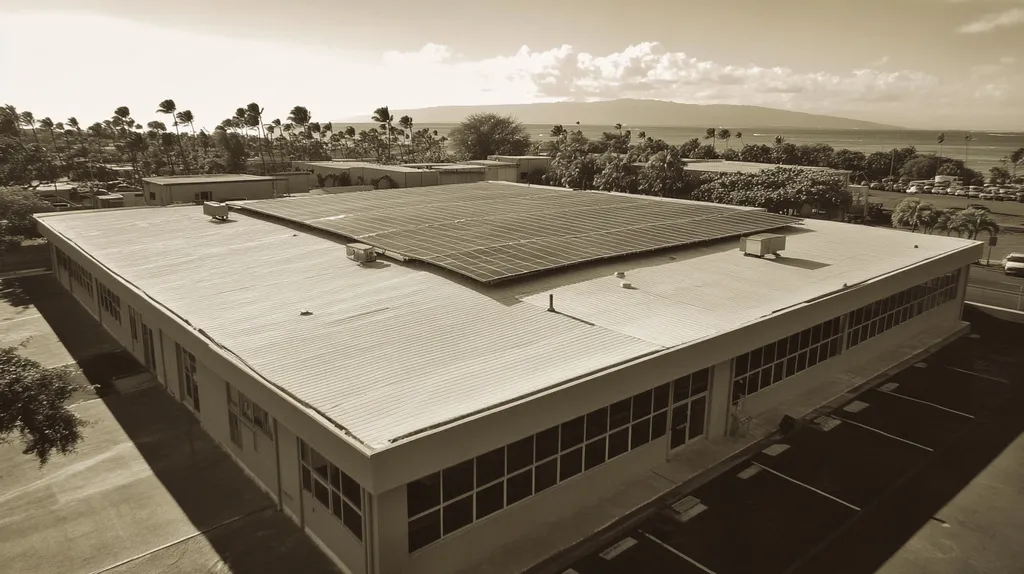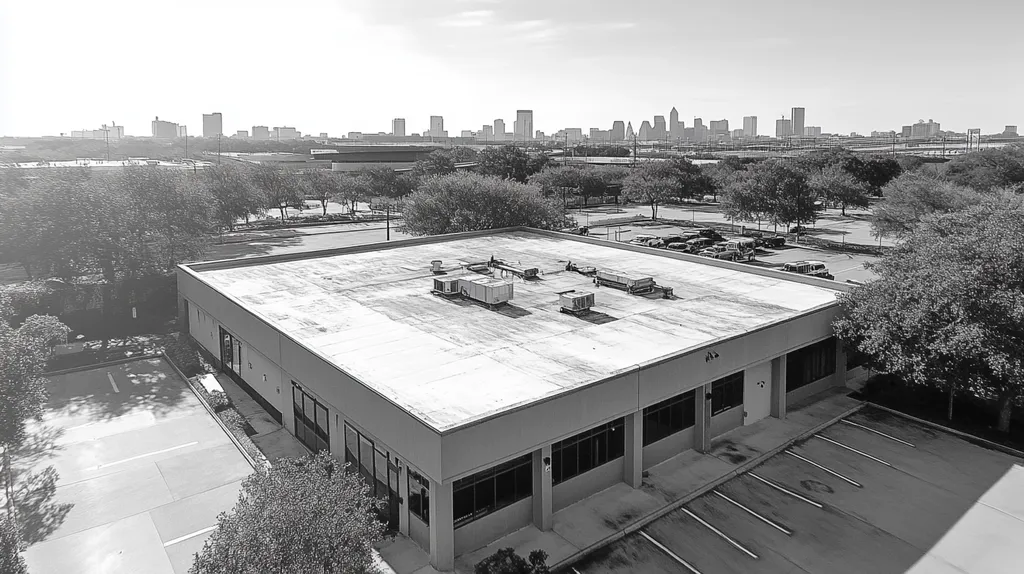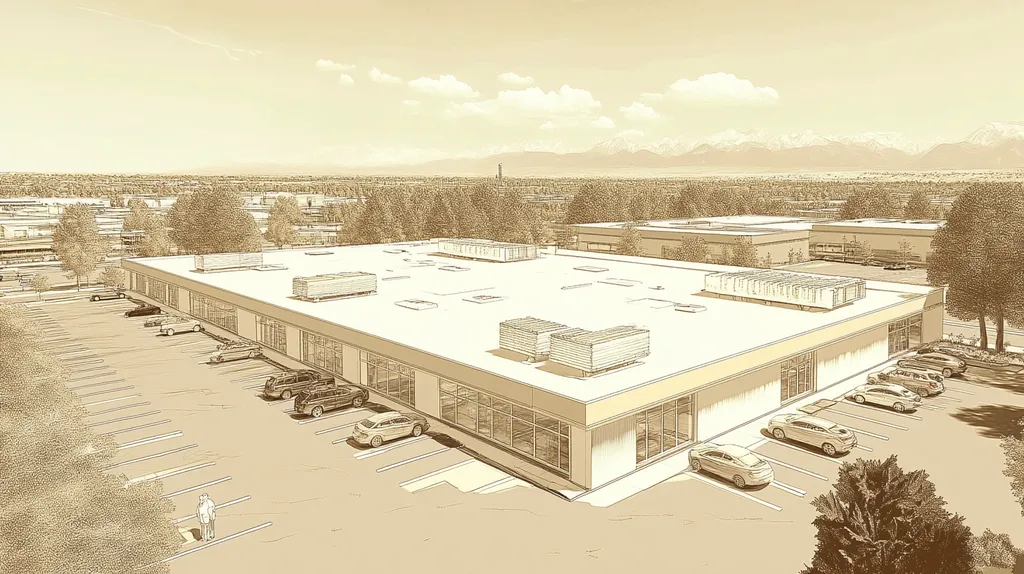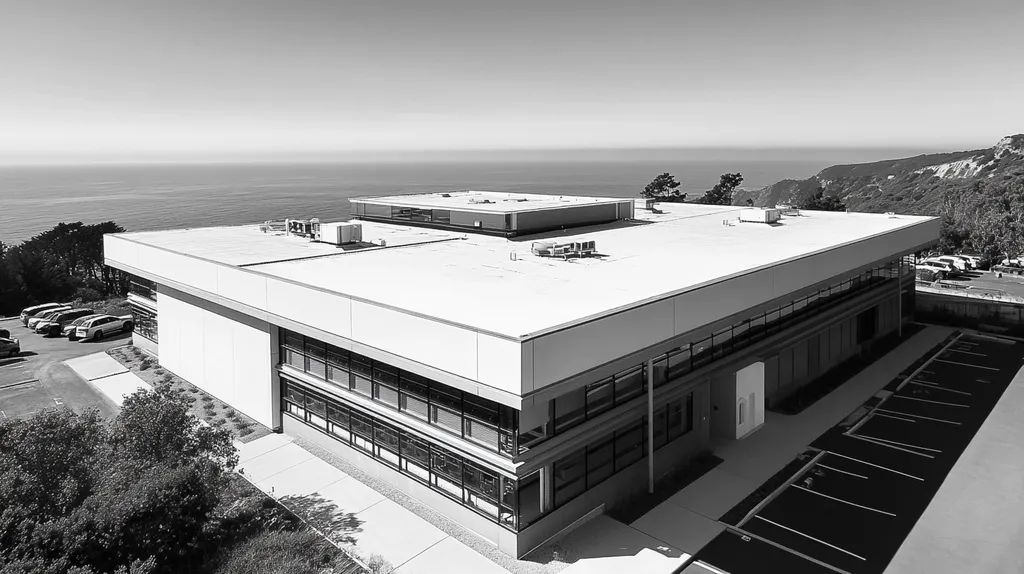Every year, commercial property owners face over $5 billion in damages due to preventable roofing failures. Without proper risk assessment, these seemingly minor issues can escalate into catastrophic structural problems.
From weather damage to equipment failures, understanding the ongoing risks to commercial roofs requires a systematic approach that considers multiple threat vectors.
This comprehensive guide examines the essential components of risk assessment, providing property managers with actionable strategies to protect their roofing investments and ensure regulatory compliance.
SECTION 1: FUNDAMENTAL CONCEPTS
Understanding ongoing risks associated with an existing commercial roof is not just important—it’s essential. Each year, billions of dollars in damage occur due to overlooked roofing hazards, which can include everything from leaks to severe structural failures. A proactive approach to risk assessment can significantly reduce a business’s repair costs and downtime, while also ensuring compliance with essential safety standards. This section delves into key hazards, fundamental risk assessment principles, and essential industry safety benchmarks.
Understanding Roofing Hazards
Roofing hazards are often more complex than they appear at first glance. Factors such as the age of the roof, weather conditions, and improper installation practices can heighten vulnerabilities. For example, flat roofs are particularly prone to water pooling, which can hasten deterioration and ultimately lead to leaks.
Severe weather events introduce significant risks as well. High winds can displace roofing materials, while heavy rain may overwhelm drainage systems. Additionally, environmental factors like tree branches and pollutants can inflict localized damage over time.
Maintenance neglect only worsens these hazards. Roofs that aren’t routinely inspected or maintained may begin to exhibit issues that go unnoticed until they escalate into major problems. Property managers need to stay alert to these threats to protect their investments and maintain the integrity of the building.
Risk Assessment Basics
A successful risk assessment starts with identifying potential hazards that could compromise a roof’s integrity. A comprehensive examination should take into account both internal and external factors, utilizing tools like detailed checklists and regular inspections. Each section of the roof must be carefully analyzed for signs of wear, moisture, and material failure.
It’s equally important to evaluate the likelihood of each hazard occurring. This assessment involves analyzing past performance, understanding regional climate trends, and considering the current condition of the roof. By quantifying these risks, property managers can prioritize issues that require immediate attention.
Finally, creating a structured risk management plan is vital for effective decision-making. This plan should clarify responsibilities, establish inspection timelines, and outline budget considerations for necessary maintenance or repairs. Such proactive measures minimize disruptions to daily business operations while maximizing long-term roof protection.
Industry Safety Standards
Adherence to industry safety standards is crucial for protecting both properties and the workers involved. Organizations like the Occupational Safety and Health Administration (OSHA) provide guidelines designed to promote safe roofing practices. Following these standards reduces the risk of accidents that could occur during maintenance or repair work.
Moreover, roofing materials must align with local building codes and industry certifications. This ensures that roofs are built to withstand environmental challenges and meet safety requirements. For instance, using fire-resistant materials can greatly enhance the safety of a commercial building.
Continuous education regarding safety practices—such as correct ladder usage and harness protocols—is essential. Training workers in these areas fosters a safety-first culture and can considerably extend the lifespan of the roofing system. Regular updates to safety protocols are necessary as technology and regulations evolve.
SECTION 2: SYSTEM COMPONENTS
Understanding the system components of a commercial roof is not just beneficial—it’s crucial for safeguarding the building and its occupants. Issues with roof covers, structural integrity, and mounted equipment can escalate into significant problems, leading to costly repairs and operational disruptions. Regular assessments help prevent leaks, structural failures, and other risks that can compromise a property’s value. This section explores the essential components of a roofing system to empower property owners and facility managers to mitigate ongoing risks and extend the lifespan of their buildings.
Roof Covers and Materials
The roof cover acts as the first line of defense against harsh weather and environmental exposure. It consists of various materials, such as TPO, EPDM, and PVC, each offering distinct benefits and drawbacks. For example, while TPO membranes are celebrated for their energy efficiency, they may not perform as well in certain climates compared to traditional felt roofing.
Regular inspections for signs of wear and tear are essential. Property managers should stay vigilant for cracks, blistering, or pooling water, as these can lead to serious penetration issues and structural damage if left unaddressed. Ignoring these signs can significantly increase repair costs over time.
Additionally, the selection of roofing materials affects not only compliance with local building codes but also energy efficiency standards. Investing in high-quality materials enhances durability and can lower energy expenses, benefiting both the property’s finances and its environmental footprint.
As weather and usage patterns change, adapting maintenance strategies is crucial. Continuous evaluation and potential upgrades can lead to substantial long-term savings and help protect the overall value of the asset.
Structural Integrity and Supports
The structural integrity of a roof is critical to its performance and longevity. Load-bearing components like beams and trusses support the roofing system, accommodating weight from snow and equipment. Any noticeable sagging or signs of structural weakness should prompt immediate action from facility managers.
Severe weather conditions, such as heavy snowfall or strong winds, can put these structural supports to the test. Routine inspections should check for rust, wood rot, or misalignment, all of which can jeopardize the roof’s overall safety. Failure to address these issues could result in catastrophic failures and potential liabilities.
Reinforcing structural components may seem like a significant expense initially, but such investments can preempt more costly repairs due to unexpected leaks or collapses. Long-term planning is key, with regular evaluations ensuring structures remain sound.
Embracing emerging technologies like drone inspections can streamline the process of evaluating roof supports, making it easier to allocate budget resources efficiently while ensuring a thorough assessment.
Roof-Mounted Equipment and Accessories
Commercial roofs often host a variety of equipment, including HVAC systems and solar panels, which necessitate proper maintenance to preserve roof integrity. Inadequately installed or maintained systems can lead to leaks and water damage that compromise the roofing structure.
Moreover, accessories such as drains and flashings are vital to the overall performance of the roof. Blocked drainage systems can cause water pooling, which increases wear on the roof cover. Maintenance plans should involve regular cleaning and inspection of these fixtures to ensure they function properly.
Upgrading roof-mounted equipment can greatly improve operational efficiency. For instance, energy-efficient HVAC units not only reduce energy costs but also align with sustainability goals, making them a smart investment for any facility.
Collaboration between roofing contractors and equipment service providers is essential for a comprehensive maintenance strategy. Regular consultations can help ensure that both the roof and its mounted equipment are effectively working together to avoid costly repairs and maximize operational effectiveness.
SECTION 3: IMPLEMENTATION METHODS
Assessing ongoing risks for an existing commercial roof is not a one-time task; it requires continuous vigilance. Studies indicate that commercial roofs can account for over 30% of a building’s maintenance costs. Without proactive safety measures, property owners face the potential for costly damage and serious injuries. This section outlines essential implementation methods that ensure effective risk management and protect investment.
Initial Safety Assessments
Initial safety assessments play a pivotal role in identifying both apparent and hidden issues on a commercial roof. These assessments often start with an in-depth visual inspection, where trained professionals search for signs of wear and damage. Indicators like blisters, cracks, or missing shingles can signify deeper problems that threaten the roof’s structural integrity.
A comprehensive assessment should also analyze the lifespan of roofing materials. Each type has different durability; for instance, a PVC roof may last 20-30 years, while TPO typically lasts 15-25 years. Understanding this can help in planning routine maintenance and budgeting effectively.
Leveraging technology, such as drone inspections, can enhance the assessment process by capturing hard-to-reach areas without compromising safety. Drones can provide high-resolution images that highlight potential issues more thoroughly and quickly than traditional methods.
Scheduling regular assessments, ideally annually or after severe weather events, fosters a proactive strategy. By addressing wear and tear promptly, property owners can prevent costly damage from escalating into more significant problems. Ignoring these evaluations creates a chain reaction of issues detrimental to the roof’s performance and the safety of the entire building.
Personal Protective Equipment (PPE)
Utilizing personal protective equipment (PPE) effectively is vital for maintaining safety during roof inspections. PPE includes essential items like harnesses, hard hats, and slip-resistant footwear, which significantly mitigate inspection-related risks. Failure to equip workers with the proper safety gear can lead to serious accidents, putting personnel at risk and disrupting business operations.
Ensuring that all staff receive adequate training on the proper use of PPE is equally crucial. Property owners should collaborate with roofing professionals to confirm that personnel understand how to wear and care for their equipment correctly. Improper use can undermine safety measures, exposing employees to ongoing hazards.
Creating a PPE checklist simplifies preparation before any inspection. This list should include checks for damage to the equipment and ensure that all items comply with industry standards. Implementing such measures enhances overall operational safety and accountability.
Regular audits of PPE usage and condition further strengthen safety protocols. Insufficient safety measures not only endanger workers but also expose property owners to liability in case of accidents or injuries.
Comprehensive Safety Training
Comprehensive safety training is indispensable for all personnel involved in roofing inspections and maintenance. Tailored training programs addressing the specific risks associated with roofing work significantly lower the likelihood of accidents. Research demonstrates that well-trained teams experience a 30% reduction in on-the-job injuries, underscoring the importance of education.
Training should encompass not only proper PPE usage but also hazard recognition, emergency response, and detailed knowledge about the roof system in place. Engaging seasoned roofing professionals to lead these sessions provides real-world insights, making the training relevant and impactful.
Conducting simulations for emergency situations, such as falls or other hazards, equips workers to react appropriately in real-life scenarios. Practicing these responses enhances confidence and readiness among staff, improving overall safety outcomes.
Ongoing training, rather than a one-time orientation, ensures that personnel stay updated on new safety protocols and technologies. This long-term investment fosters a culture of safety that permeates all operations, safeguarding both the workforce and the integrity of the roof.
SECTION 4: MAINTENANCE REQUIREMENTS
Effective maintenance requirements are fundamental to preserving the integrity of a commercial roof. Failing to conduct routine upkeep can lead to severe damage, skyrocketing repair costs, and even catastrophic structural failure. Research indicates that around 70% of roofing failures stem from inadequate maintenance. Regular inspections and a solid maintenance strategy are vital to prevent these costly issues from arising.
Regular Equipment Inspections
Consistent inspections of roofing systems are crucial in detecting potential issues before they turn into expensive problems. Ideally, these inspections should occur at least twice a year, typically in the spring and fall, to address seasonal vulnerabilities. Professionals should thoroughly assess flashings, seams, and points of penetration for any signs of wear or damage.
Additionally, rooftop equipment like HVAC units must be examined; wear on these systems can result in leaks if neglected. Corrosion or blockages within drainage systems can cause water accumulation, risking roof failure. By staying proactive with these components, property owners can significantly extend their roofs’ lifespan and lower long-term maintenance expenses.
Employing cutting-edge tools like infrared thermography can significantly enhance inspection processes by unveiling hidden moisture within the roofing materials. This technology helps identify problem areas requiring immediate repairs, optimizing response times. Keeping detailed records of inspections is essential not only for future reference but also for compliance with warranty stipulations.
Engaging experienced roofing contractors for regular inspections ensures thorough evaluations. Without these professional insights, minor issues can quickly escalate into major concerns, jeopardizing the roof’s overall integrity.
Maintenance Schedules and Protocols
Establishing a comprehensive maintenance schedule is vital for preserving a commercial roof’s health. A well-structured plan should delineate routine tasks such as removing debris, applying sealants, and evaluating all components. Adhering to specific protocols can substantially reduce the risks of leaks and structural damage over time.
It’s important to prioritize seasonal tasks; for instance, clearing gutters and drains before the rainy season can prevent water buildup. Checking for cracks or blisters during extremes in temperature can help identify issues stemming from thermal expansion and contraction.
Documenting all maintenance activities offers valuable insights into the long-term performance of the roof and is instrumental for future budgeting. This approach allows facility managers to allocate resources effectively, ensuring that critical issues are addressed in a timely manner.
Property owners should also remain informed about local compliance regulations and warranty requirements that may impact maintenance practices. Consistent maintenance can enhance roof performance, reduce replacement costs, and ultimately increase the value of the building.
Addressing Weather-Related Damage
Facility managers should prioritize checking for missing shingles, compromised membranes, or punctures caused by debris. Neglecting these issues can result in leaks and further structural damage, leading to costly and time-consuming repairs. A prompt response can mitigate the risks associated with secondary damage resulting from prolonged water exposure.
Implementing preventive measures like reinforcing vulnerable areas and installing effective drainage systems can lessen adverse impacts from severe weather. Additionally, investing in roofing materials specifically designed to withstand local weather conditions can provide long-term benefits.
Establishing a clear action plan for managing weather-related damage empowers property owners to respond swiftly. Regular training for facility staff on emergency protocols can enhance readiness, further protecting the roof from adverse weather effects.
SECTION 5: PERFORMANCE METRICS
Establishing proper performance metrics is vital for ensuring both the longevity and safety of commercial roofs. Without consistent monitoring, wear and tear can lead to significant risks, resulting in costly repairs and jeopardizing workplace safety. In fact, nearly 25% of commercial roofs fail prematurely due to inadequate maintenance, according to the National Roofing Contractors Association. Property owners and facility managers must prioritize key metrics to effectively assess ongoing risks and maintain compliance with essential industry standards.
Monitoring for Wear and Tear
Regular monitoring for wear and tear is essential for maintaining a commercial roof’s integrity. Small issues, such as minor leaks or material degradation, can quickly escalate if left unchecked. Research indicates that neglecting early signs of wear can increase repair costs by as much as 50% over time.
To monitor effectively, property owners should establish a routine inspection schedule. Focus inspections on seams, flashings, and areas around HVAC units, where wear is most frequent. Utilizing drones and infrared technology can help identify hidden damages that are difficult to spot during traditional inspections.
Documentation is key. Photographs and checklists of the roof’s condition will help track changes over time. This data not only aids in future maintenance decisions but can also support warranty claims by clearly outlining any covered issues.
Engaging a qualified roofing contractor for annual assessments provides the added benefit of professional expertise. Their trained eyes can spot concerns that may escape untrained observers, ensuring a thorough evaluation of the roof’s condition.
Evaluating Weather Resistance
Weather resistance is a critical performance metric that dramatically affects a roof’s lifespan. Extreme weather can cause severe damage, such as punctures from hail or issues caused by high winds. For properties located in high-storm areas, the American Society of Civil Engineers notes that roofs face accelerated wear due to environmental pressures.
To assess weather resistance, property owners should carefully evaluate the roof’s material specifications and review any previous weather-related damage. Understanding the ratings of roofing materials—particularly their ability to withstand wind uplift and other hazards—is essential for determining risk levels.
Facilities should also consider installing preventive features like enhanced drainage systems to mitigate the risk of flooding and pooling, which are common contributors to roof failures. Regularly cleaning gutters and downspouts is equally important to avoid blockages that can exacerbate water accumulation problems.
Staying informed about local weather patterns can further enhance preparedness. When severe storms are anticipated, proactive inspections can help identify vulnerabilities and fortify the roof before issues arise.
Assessing Compliance with OSHA Standards
Compliance with OSHA (Occupational Safety and Health Administration) standards is not just a regulation—it’s a cornerstone of roof safety practices. Falling short on these requirements can result in penalties and significantly increase risks during maintenance or repairs.
Property owners should familiarize themselves with OSHA standards pertinent to roofing work, particularly regarding fall protection and personal protective equipment. These guidelines exist to help prevent accidents that could lead to severe injuries or worse.
A proactive compliance strategy includes training both staff and contractors on these essential safety requirements. Maintaining proper documentation of safety protocols and regularly reviewing them ensures everyone is aware of best practices. An up-to-date safety manual can be an invaluable resource during inspections.
Additionally, conducting frequent safety audits can uncover potential compliance gaps. Engaging third-party safety consultants can provide further insights, ensuring adherence to current best practices and reinforcing a culture of safety within the facility.
SECTION 5: PERFORMANCE METRICS
Establishing proper performance metrics is crucial for ensuring the longevity and safety of commercial roofs. Without consistent monitoring, wear and tear can compromise a roof’s integrity, leading to expensive repairs and potential safety hazards. Alarmingly, the National Roofing Contractors Association reports that nearly 25% of commercial roofs fail prematurely due to inadequate maintenance. Property owners and facility managers must prioritize key metrics to effectively assess ongoing risks and maintain compliance with industry standards.
Monitoring for Wear and Tear
Regular monitoring for wear and tear is essential for maintaining a commercial roof. Ignoring small issues, like minor leaks or material degradation, can quickly escalate into significant problems. Research from the Institute of Inspection, Cleaning and Restoration Certification indicates that neglecting initial signs of wear can lead to repair costs increasing by as much as 50% over time.
To monitor effectively, property owners should establish a routine inspection schedule focusing on seams, flashings, and areas around HVAC units—where wear is most common. Utilizing drones and infrared technology can help uncover hidden damage that traditional inspection methods might miss.
Maintaining detailed documentation of the roof’s condition with photographs and checklists ensures that changes are tracked over time. This information not only aids in making informed decisions about maintenance or replacements but also supports warranty claims by clearly outlining covered issues.
Additionally, engaging a qualified roofing contractor for annual assessments can bring expert insight. Their experience will uncover concerns that may not be visible to untrained observers, ensuring a thorough and accurate evaluation of the roof’s condition.
Evaluating Weather Resistance
Weather resistance is a critical performance metric that directly impacts a roof’s lifespan. Extreme weather events can inflict serious damage, such as punctures from hail or the lifting effects of high winds. The American Society of Civil Engineers notes that roofs located in high-storm areas face accelerated wear rates due to these environmental pressures.
To assess weather resistance, property owners should evaluate the specifications of roofing materials while reviewing any past weather-related damages. Understanding the ratings of these materials, particularly their capacity to withstand wind uplift and other hazards, is essential for gauging risk levels.
Implementing preventive features like enhanced drainage systems can mitigate risks related to flooding and pooling—frequent causes of roof failure. Regular gutter and downspout maintenance is equally important to avoid blockages that lead to water accumulation.
Staying current on weather patterns through local meteorological services can also inform necessary adjustments. Proactive inspections ahead of severe weather forecasts can help identify vulnerabilities, allowing for fortifications before potential issues emerge.
Assessing Compliance with OSHA Standards
Compliance with OSHA (Occupational Safety and Health Administration) standards goes beyond regulatory obligation; it’s a cornerstone of roof safety practices. Falling short in adhering to these crucial guidelines can lead to penalties and significantly raise risks during maintenance or repairs.
Property owners should familiarize themselves with OSHA standards relevant to roofing work, especially those regarding fall protection and personal protective equipment. These guidelines exist to minimize accidents that could result in serious injuries or even fatalities.
A proactive compliance strategy includes training both staff and contractors on essential safety requirements. Maintaining proper documentation of safety protocols and routinely reviewing these measures ensures that everyone is aligned with best practices. An up-to-date safety manual can serve as a valuable reference during inspections.
Moreover, conducting regular safety audits can help reveal compliance gaps. Engaging third-party safety consultants can provide additional insights, ensuring that safety measures align with current best practices and reinforce a culture of safety throughout the facility.
The Bottom Line
Commercial roof failures cost businesses over $5 billion annually, with 70% of these incidents stemming from inadequate risk assessment and maintenance.
Property owners who implement comprehensive risk assessment protocols consistently report 40% fewer emergency repairs and significantly extended roof lifespans.
Success depends on three critical factors: maintaining rigorous inspection schedules, documenting all findings meticulously, and responding swiftly to identified issues.
By following the strategies outlined in this guide, facility managers can effectively protect their roofing investments while ensuring regulatory compliance and workplace safety.
The cost of inaction far exceeds the investment required for proper risk assessment—making proactive monitoring not just advisable, but essential for long-term facility management.
FREQUENTLY ASKED QUESTIONS
Q. What are the main ongoing risks for a commercial roof?
A. Ongoing risks for a commercial roof include leaks, structural failures, and weather damage. Neglected maintenance can lead to serious issues, resulting in costly repairs and safety hazards. Proactively assessing these risks helps maintain a roof’s integrity and prolong its lifespan.
Q. How can I assess the condition of my industrial roof?
A. Assessing an industrial roof involves visual inspections, evaluating for signs of wear, and checking material integrity. Consider hiring professionals for comprehensive assessments, especially after severe weather. Documenting conditions over time aids decision-making and highlights necessary upkeep.
Q. What role do industry safety standards play for commercial roofs?
A. Industry safety standards ensure safe practices in commercial roofing, protecting workers and the property. Compliance with guidelines from organizations like OSHA reduces accident risks during inspections and maintenance, safeguarding both personnel and investments in the roofing system.
Q. How can I maintain my commercial roof effectively?
A. Effective maintenance of a commercial roof includes regular inspections, addressing minor repairs promptly, and following a structured maintenance schedule. Keeping equipment functioning optimally and removing debris before storms can prevent significant issues, enhancing durability and performance.
Q. What performance metrics should I monitor for my commercial roof?
A. Monitor metrics like wear and tear, weather resistance, and compliance with safety standards. Regular assessments will help track the roof’s condition and identify issues early, preventing costly repairs and enhancing safety within the facility.
Q. How does weather impact my industrial roof?
A. Weather can significantly affect an industrial roof’s integrity. Severe storms, high winds, and extreme temperatures can lead to damage like punctures and leaks. Regular inspections after adverse weather can help identify and address any compromised areas swiftly.
Q. What should I include in a safety training program for roof inspections?
A. A comprehensive safety training program should cover PPE usage, hazard recognition, and emergency response. Engaging experienced professionals can enhance the program’s effectiveness, ensuring personnel understand and can respond to potential risks during inspections and maintenance.











